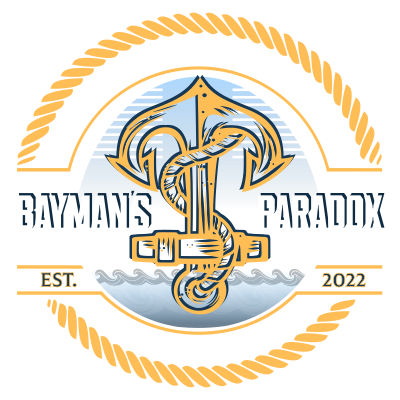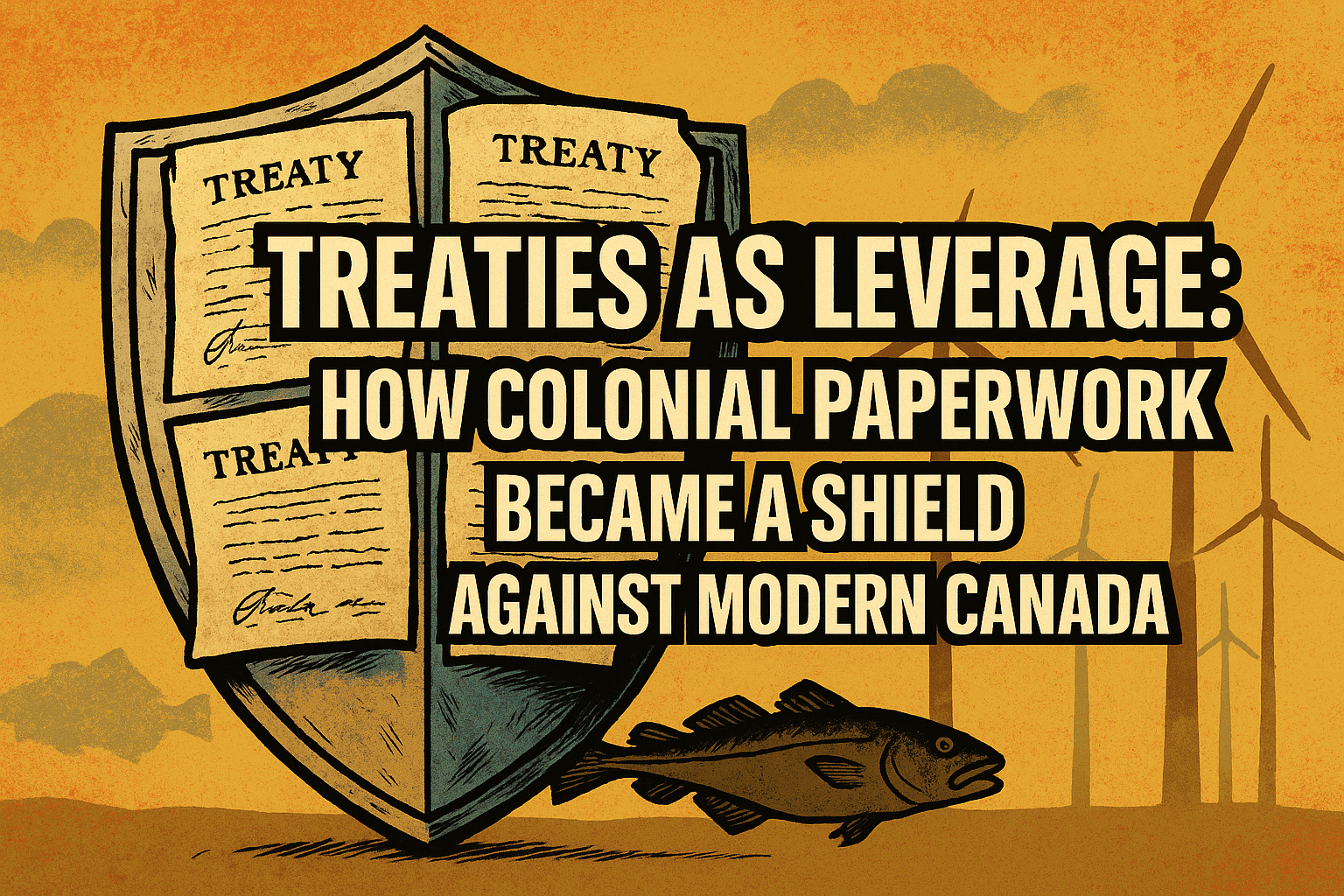Treaties in Newfoundland and Labrador were never neutral; they were instruments of leverage. On paper, they promised protection and partnership. In practice, they codified outside control, hardened asymmetries, and taught communities to negotiate their futures inside frameworks they did not design. The paradox is enduring: the very documents that look like safeguards often function as shields for the state and walls for the local.
Paper as power: from empire to Ottawa
Colonial paperwork—treaties, charters, contracts—operated as governance technologies, translating distant priorities into local constraint. The pattern didn’t end with empire. In modern Canada, documentary frameworks (registries, MOUs, environmental assessment rules, long-term utility contracts) still structure who has standing, who is heard, and who gets paid. The logic resembles what economist János Kornai called the soft budget constraint: once higher authorities habitually backstop or pre-ordain outcomes, local actors adapt their behavior to dependency and constraint. The document becomes the device that both authorizes and limits action.¹
The “Local Paradox”: why frameworks miss the ground they stand on
Van Assche, Greenwood, and Gruezmacher call this dynamic the Local Paradox: grand policy schemes rely on local capacity to succeed, yet those same schemes often undermine the autonomy and institutional thickness that real implementation requires. The result: frameworks that look empowering on paper but reproduce control at the point of delivery.² Newfoundland and Labrador is a textbook case.
Paper walls in hydropower: Churchill Falls → Muskrat Falls
Consider the long shadow of Churchill Falls. A 1969 contract gave Hydro-Québec rights to power at extremely low, fixed prices into 2041, a deal widely criticized as “barely distinguishable from being free,” locking value away from NL for decades.³ ⁴ The Supreme Court affirmed the contract’s terms, declining to rewrite the bargain ex post.⁵
When leaders later championed Muskrat Falls to “move past” Churchill, the project spiraled from ~$7.4B to $12.7B by 2020, with the Commission of Inquiry documenting profound governance and management failures and 140 hearing days of testimony.⁶ ⁷ ⁸ The moral: paperwork cuts both ways—ironclad when it preserves outside leverage, porous when it shifts risk back onto locals.
Cod to wind: how past paperwork shapes present consent
The 1992 cod moratorium remains the single largest mass layoff in Canadian history, displacing ~30,000 NL fishers and plant workers (≈12% of the provincial labor force).⁹ ¹⁰ That trauma taught communities how quickly livelihoods can disappear “in an afternoon.” Against that memory, new energy projects are judged less by glossy promises and more by procedural fairness, distribution of benefits, and whether locals have actual leverage—not just invitations to comment.
Hogan’s 2025 study across Fermeuse, St. Lawrence, and Ramea shows high acceptance of existing wind installations but a posture of “skeptical optimism” for future projects: residents value tax stability, a few good local jobs, and a sense of modern pride—yet they filter all of it through histories of resource mismanagement and broken assurances.¹¹
Consultation as choreography: when “voice” isn’t leverage
NL’s environmental assessment rules guarantee public comment windows (e.g., 35-day periods; EIS comment windows; prescribed review clocks).¹² ¹³ Those opportunities matter—but they often function like scripted choreography unless paired with ownership stakes, revenue participation, and real co-decision. Ramea’s once-innovative Wind-Hydrogen-Diesel demo (launched to reduce diesel dependence) later faltered operationally; the province has since processed asset transfers, illustrating how project control and outcomes can drift away from community expectations, even when the original paperwork pitched local benefit.¹⁴ ¹⁵
Mega-frameworks, micro-voices: wind-hydrogen’s scale jump
The province lifted its moratorium on onshore wind in April 2022, explicitly opening a pathway for industrial/export projects.¹⁶ ¹⁷ In April 2024, World Energy GH2’s Nujio’qonik proposal was released from further provincial environmental assessment, with reporting on multi-GW wind feeding export-oriented hydrogen and ammonia production.¹⁸ ¹⁹ This is a scale jump—from 9-turbine community-proximate projects to hundreds of turbines across multiple sites. The same old risk applies: if the paperwork front-loads rights, control, and revenue elsewhere, consultation may not translate into leverage.
Identity, recognition, and “98% Pretendian”
Who counts—who is recognized—often turns on documentation: registries, cards, court findings. In Newfoundland politics, even figures like Liberal candidate Jeff Todd Young illustrate how legitimacy and recognition are framed more by paperwork and institutional endorsement than by lived community standing. When identity and land are mediated by what the state will recognize on paper, “winning” becomes less about history on the ground and more about conformity to documentary criteria. This is the cultural mirror of the Local Paradox: communities are asked to bring authentic local input, but the acceptable inputs are pre-formatted by centralized paperwork. The state’s “shield” is the file.
The takeaway
Colonial paperwork taught Newfoundland and Labrador a hard lesson: on paper, power is neat, durable, and remote. If modern frameworks reproduce that logic—fixed-price exports for half a century, megaproject risks socialized at home, consultations without stakes—then the shield still works, just with newer logos. What was written to protect has instead become the proof of surrender — a record of who once believed the page could speak for them.
See Also
- 98% Pretendian
- Green Land, Empty Hands
- The Local Paradox in Grand Policy Schemes
- Governance Without Teeth
- Kingmaker Dynamics in Newfoundland: Recycled Influence, Memory, and Global Parallels
- Kingmaker Dynamics, Part II: How Influence Persists in Newfoundland Institutions
References
[1] Kornai, J. (1986). The Soft Budget Constraint. Kyklos, 39(1), 3–30. https://www.kornai-janos.hu/media/konyvek_cikkek/w20825/Kornai1986_The_Soft_budget_Constraint_-_Kyklos.pdf
[2] Van Assche, K., Greenwood, R., & Gruezmacher, M. (2022). The local paradox in grand policy schemes: Lessons from Newfoundland and Labrador. Scandinavian Journal of Public Administration, 26(1), 25–51. https://www.sciencedirect.com/science/article/abs/pii/S0956522122000197?via%3Dihub (Local Download)
[3] Feehan, J.P., & Baker, K. (2010). The Churchill Falls contract and why Newfoundlanders can’t get over it. Policy Options (IRPP). https://policyoptions.irpp.org/2010/09/the-churchill-falls-contract-and-why-newfoundlanders-cant-get-over-it/
[4] Global News. (2024, Dec 12). What’s inside Quebec, Newfoundland and Labrador’s Churchill Falls deal. https://globalnews.ca/news/10914489/churchill-falls-new-deal-quebec-newfoundland-labrador/
[5] Supreme Court of Canada. (2018). Churchill Falls (Labrador) Corp. v. Hydro-Québec, 2018 SCC 46. https://decisions.scc-csc.ca/scc-csc/scc-csc/en/item/17338/index.do
[6] Commission of Inquiry Respecting the Muskrat Falls Project. Final Report (Volumes & Executive Summary). https://www.muskratfallsinquiry.ca/final-report/
[7] Fraser Institute. (2021, Aug 20). Muskrat Falls project illustrates the problem with public ownership of large-scale projects. https://www.fraserinstitute.org/commentary/muskrat-falls-project-illustrates-problem-public-ownership-large-scale-projects
[8] Government of Newfoundland and Labrador. (2020, Mar 10). Provincial Government Releases Report on the Muskrat Falls Inquiry. https://www.gov.nl.ca/releases/2020/exec/0310n02/
[9] Heritage NL. Economic Impacts of the Cod Moratorium. https://www.heritage.nf.ca/articles/economy/moratorium-impacts.php
[10] Britannica. (2025, Jun 20). Cod fishery collapse of 1992. https://www.britannica.com/event/cod-fishery-collapse-of-1992
[11] Hogan, J. L. (2025). The legacy of the cod fishery collapse: Understanding wind energy acceptance in Newfoundland through energy justice and place. Energy Research & Social Science, 127, 104274. https://doi.org/10.1016/j.erss.2025.104274 (Local Download)
[12] Government of Newfoundland and Labrador – Environment (2023). Environmental Assessment: Guide to the Process (public comment periods, timelines). https://www.gov.nl.ca/ecc/files/GUIDE-TO-THE-PROCESS_May-2023.pdf
[13] Newfoundland and Labrador Regulation 54/03. Environmental Assessment Regulations, 2003. https://www.assembly.nl.ca/legislation/sr/regulations/rc030054.htm
[14] Government of Newfoundland and Labrador – ECC. Ramea Wind-Hydrogen-Diesel Project (project file). https://www.gov.nl.ca/ecc/projects/project-1357/
[15] Newfoundland and Labrador Board of Commissioners of Public Utilities. Order P.U. 30(2024) – includes Wind-Hydrogen-Diesel asset disposition details. https://www.pub.nl.ca/PU/orders/2024/P.U.%2030(2024).PDF
[16] Government of Newfoundland and Labrador – IET (2022, Apr 5). Minister Parsons Announces End of Moratorium on Wind Development. https://www.gov.nl.ca/releases/2022/iet/0405n07/
[17] Government of Newfoundland and Labrador – IET (2022, Jul 26). Update Provided on Wind Development Process. https://www.gov.nl.ca/releases/2022/iet/0726n04/
[18] Government of Newfoundland and Labrador – ECC (2024, Apr 9). Environmental Assessment Bulletin: WE GH2 Project Release from Further EA. https://www.gov.nl.ca/releases/2024/ecc/0409n05/
[19] Reuters (2024, Apr 9). Newfoundland and Labrador approves World Energy’s hydrogen project (Nujio’qonik). https://www.reuters.com/sustainability/climate-energy/canadian-province-newfoundland-labrador-approves-world-energys-hydrogen-project-2024-04-09/

